- 31 minutes ago
- Technology
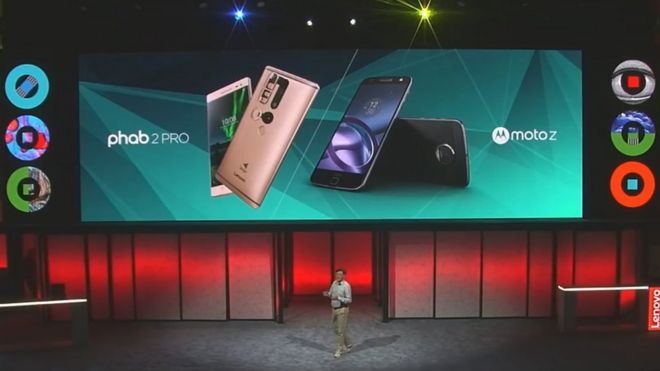 LENOVO
LENOVO
Lenovo has announced two unusual smartphones - a model that uses special cameras to scan its surroundings and a handset with optional snap-on parts.
The Phab2Pro's sensors allow it to make sense of objects and close-by spaces, allowing graphics to be intelligently added to real-world views.
The Moto Z uses magnets to add optional hardware modules to the phone's rear including a speaker and a projector.
Analysts said the innovations might prove a tough sell.
That would complicate Lenovo's efforts to turn around sales of its own phones and those of the Motorola division it bought from Google for $2.8bn in 2014.
"There's a delicate balance between being on the leading edge and the bleeding edge, and Lenovo skirts that line," said Ramon Llamas from the tech research firm IDC.
"If these products prove to be a hit - and that's a big if - then Lenovo emerges as a leading edge vendor.
"The Phab2Pro has a lot of promise, showing immediate value creation within certain use cases. The Moto Z is certainly innovative, but I'm not sure how much consumers can wrap their brains around modular devices."
 LENOVO
LENOVO
The announcements were made at an event in San Francisco, where bendy smartphone and tablet prototypes were also revealed.
Lenovo is currently the world's sixth bestselling smartphone-maker, according to IDC, after being overtaken by two other Chinese brands, Oppo and Vivo towards the start of the year.
The Beijing-based company reported in May that it had swung to a loss of $128m (£89m) in its last financial year.
It acknowledged at the time that it was having problems integrating Motorola.
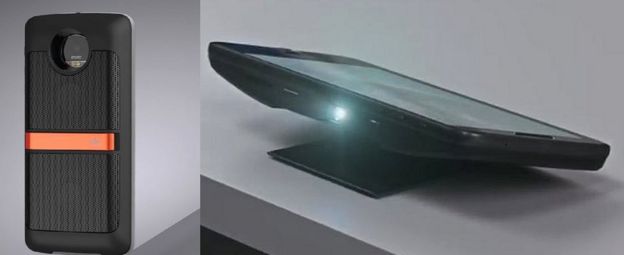 LENOVO
LENOVODepth and motion
The Phab2Pro is the first device to use Google's Tango technology.
The search firm has developed a system that adds depth-sensing and motion-tracking cameras to the normal front and rear photo lenses.
Lenovo suggested this opened up several possibilities, including:
- video games in which characters could be superimposed over a view of a room
- directions that could be drawn over a view of a store to show where goods are
- the ability to see and move 3D models of furniture over a view of a home to help with interior decoration
However, an on-stage demo proved problematic.
A game of virtual dominos - seen superimposed over a view of a real desk - saw the pieces repeatedly freeze part way through their intended run.
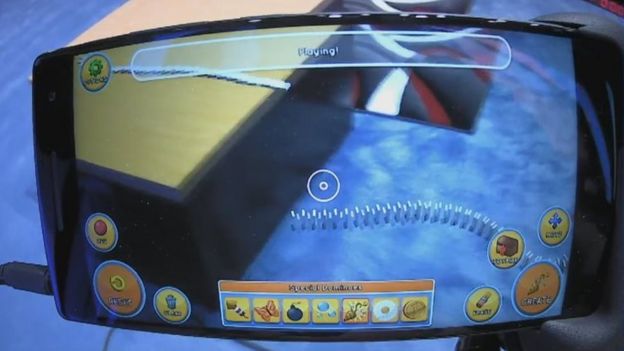 LENOVO
LENOVO
And an effort to use the sensors to get the dimensions of a real-world table took several attempts to get the software to lock onto the object.
This raises questions about whether the tech is ready to go on sale as planned in September.
"In real life you're just going to use a tape measure" commented Ben Wood from the CCS Insight consultancy.
"It's just a classic example of a solution looking for a problem.
"Yes, you can envisage some lovely use cases - for example a DHL app that would let you hold up a parcel and give you its dimensions and the approximate cost to send it.
"But that doesn't exist yet, and what you end up with is an underwhelming measuring demo."
 LENOVO
LENOVOSnap-on mods
The Moto Z introduces the concept of Moto Mods - snap-on parts that connect to the back of the phone via 16 small metal pins.
Examples of modules it plans to offer alongside the phone include:
- a projector capable of creating a 70in (178cm) display
- a loudspeaker made by the audio specialist JBL
- a power pack developed by Incipio that offers 22 hours of extra battery life "without adding bulk"
Lenovo said it was working with others to create new modules and also urged developers to create more following the phone's release later this summer.
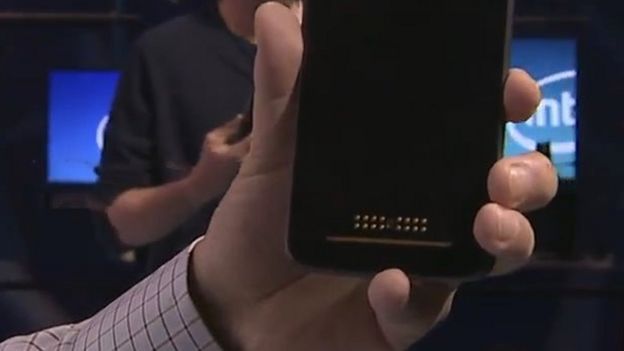 LENOVO
LENOVO
LG already has an alternative modular handset on sale - the G5 - and Google is working on Project Ara, a design that will allow several parts to be added at once.
They mark a break with a trend that has seen phone manufacturers integrate components as closely together as possible to maximise battery life and computing power.
One industry watcher questioned the appeal.
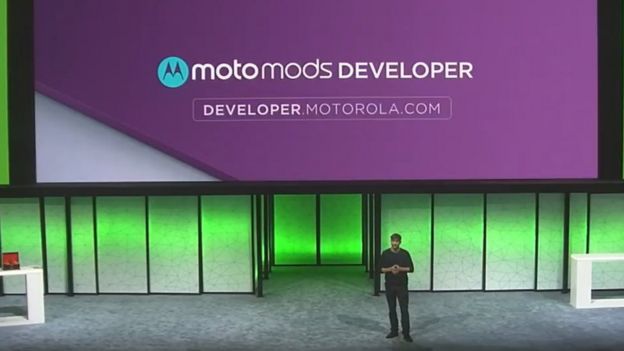 LENOVO
LENOVO
"Consumers just do not want another item to carry with them," said Carolina Milanesi from the market research firm Creative Strategies.
"When we do chose to carry something separate, it serves a very specific purpose or it is made by a brand that we want to carry because it is the best in that segment.
"While Lenovo talked about wanting to limit compromise it seems to me that you are still left with one."
Future tech
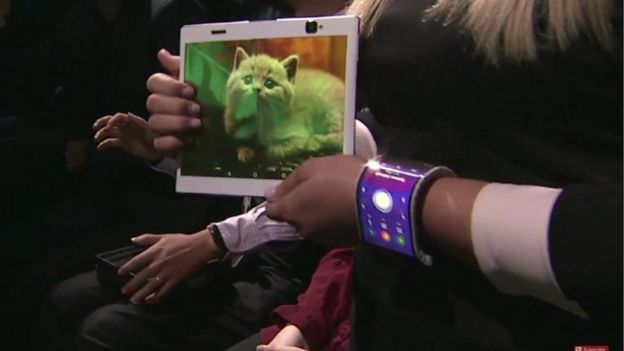 LENOVO
LENOVO
Lenovo also showed off several concept devices at its presentation.
These included a smartphone and tablet with flexible screens.
This allowed the handset to be wrapped around a person's wrist so that it did not have to be held, and a tablet to be folded in half, making it easier to use one-handed.
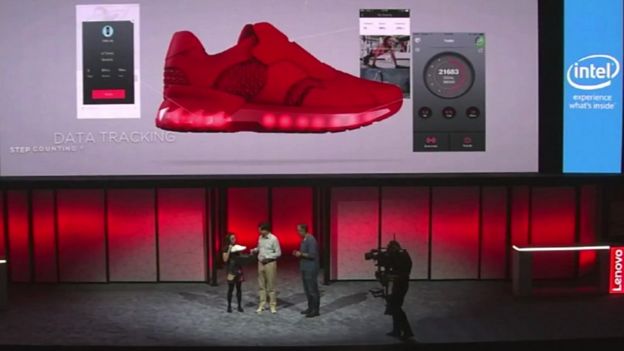 LENOVO
LENOVO
In addition, the firm briefly showed off a revised model of its smart shoes.
It said the Intel processor-equipped footwear could track its wearer's movements and calorie burn.
The firm did not, however, say when any of these might go on sale.
Analysis: Dave Lee, North America technology reporter
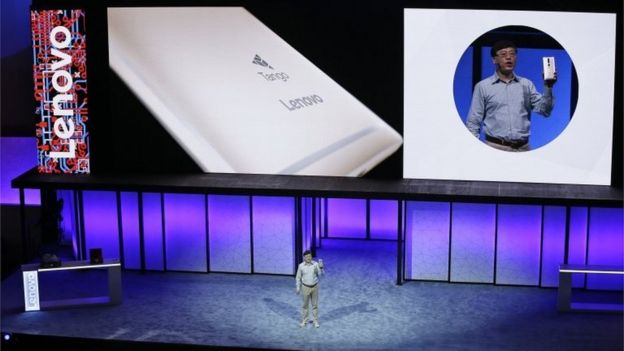 AP
AP
Motorola's Razr - the thin flip phone from 2003 - was an iconic piece of design, something the company has been trying to replicate ever since.
Today, Motorola - now part of Lenovo after a brief stint being owned by Google - thinks Moto Mods might be its next design masterstroke. I don't.
The firm has been working on a modular phone for some time, and the idea of swapping components is appealing - strapping on a projector when you need it, or souped-up speakers, could be very useful.
But there are already battery packs out there. And Bluetooth accessories that will give you much the same functionality. They may not be as easy to "snap", but I can't see it being enough to tempt people into ditching what they already have.
In the same vain, the Phab2Pro, the smartphone with Tango built in, offers some promising new applications worth thinking about, particularly for retail.
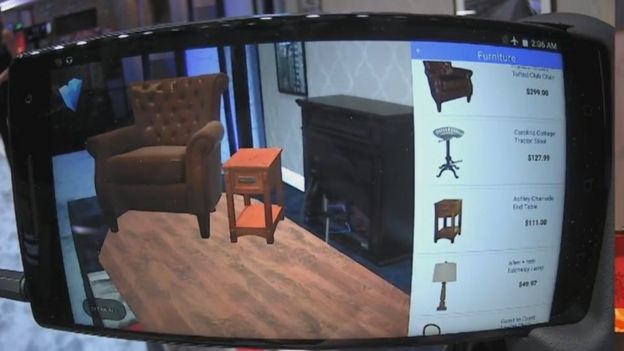 LENOVO
LENOVO
But the question isn't whether Tango is cool. It clearly is. The question is whether Tango is the sort of feature that would alter your smartphone buying choices.
And that's where the technology falls well short. It's a luxury, not a necessity, and when up against its cheaper rivals, a Lenovo phone with Tango won't ever be more appealing to the masses than a cheaper smartphone from Xiaomi or ZTE.
That's why Lenovo has dropped out of the top five smartphone makers in the world.

No comments:
Post a Comment